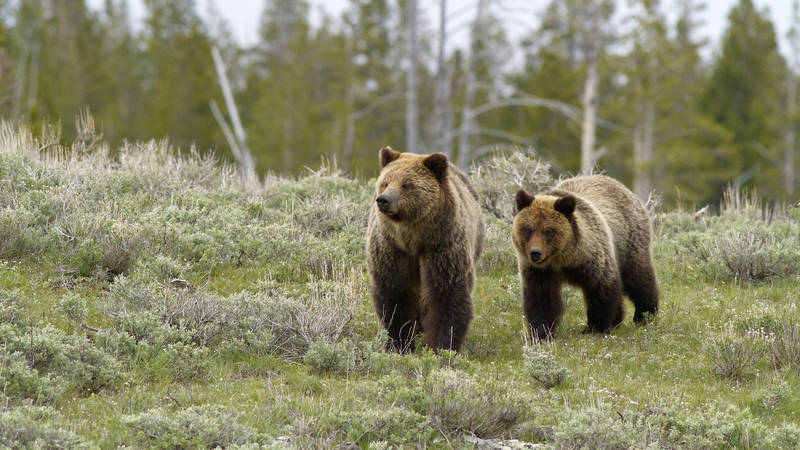The U.S. Fish and Wildlife Service wants to remove Yellowstone’s grizzlies from the endangered list, but these iconic animals need better protections first.
Victory is rarely achieved alone. We often need a team of partners, especially when it comes to protecting our country’s national parks and iconic wildlife.
Take California’s Channel Islands. The U.S. Fish and Wildlife Service removed this national park’s namesake foxes from protection under the Endangered Species Act earlier this year after fox populations successfully rebounded from numbers that had plummeted in the late 1990s. The animals are now on the road to recovery, thanks to the National Park Service, state and federal agencies, local and national conservation organizations, and the American public. This was widely and rightfully celebrated as a collaborative victory.

Court Ruling Saves Greater Yellowstone Grizzly Bears
Judge’s ruling overturns Trump administration decision to remove endangered species protections from grizzly bears in the Yellowstone and Grand Teton region.
See more ›In stark contrast, the U.S. Fish and Wildlife Service is rushing a recent proposal to remove the Greater Yellowstone Ecosystem grizzly bear from the Endangered Species List. The agency has failed to institute a collaborative process or include provisions that ensure the long-term health of this population of grizzly bears. To date, the agency has failed to adequately engage the public and cooperating agencies, including the National Park Service, in this crucial decision. The current proposal threatens the long-term health of this iconic animal, which Americans have made great investments in protecting since the agency first listed the species as threatened in 1975.
NPCA has many concerns with the plan as it is currently written. The proposal:
Fails to provide long-term and enforceable regulations to ensure this grizzly population remains stable and is able to increase in both size and geographic scope.
Could allow grizzly bear hunting to occur within National Park Service-managed lands, including the John D. Rockefeller Jr. Parkway; on privately owned land or inholdings within Grand Teton; and adjacent to lands managed by National Park Service.
Does not include measures that would encourage connectivity to grizzly bears that live in the Crown of the Continent/Glacier ecosystem. This is a glaring misstep, as the Yellowstone grizzly bears currently live in what is essentially an island of protected lands and need the genetic diversity of other bear populations to thrive.
Fails to provide the Park Service a formal seat at the table to work with state agencies on management of park bears that occasionally move beyond park borders;
Fails to properly consider how climate change will impact Yellowstone grizzly bears in the long-term.
Federal and state agencies have dedicated more than four decades of effort and millions of taxpayer dollars to conserving this grizzly bear population. Yet, the current proposal ignores important concerns raised by the National Park Service, the agency responsible for the core of the ecosystem’s population. Instead, the U.S. Fish and Wildlife Service appears to be scrambling to complete the delisting before the end of the year. An ill-planned removal of grizzly bears will not only jeopardize the long-term survival of this species, but also the continued success of the Endangered Species Act.
Luckily, there is still a chance to pause the delisting process and take the time needed to address the concerns of the National Park Service, the conservation community and other concerned individuals.
Stay On Top of News
Our email newsletter shares the latest on parks.
Last spring, nearly 18,000 people asked U.S. Fish and Wildlife Service to improve its plan. But if the agency doesn’t make these improvements, it is our hope that the Department of Interior and the White House will halt the current delisting process while they still can. The grizzly bears that call Yellowstone, Grand Teton and the Greater Yellowstone Ecosystem home deserve an effective long-term plan for survival, not a rushed decision that threatens to reverse more than 40 years of progress that so many have worked so hard to achieve.
About the author
-
 Stephanie Adams Director, Conservation Programs, Northern Rockies
Stephanie Adams Director, Conservation Programs, Northern RockiesStephanie joined NPCA in the summer of 2013 as the Yellowstone Wildlife Fellow and is now Director for NPCA's Conservation Programs.
-
General
-
Issues


